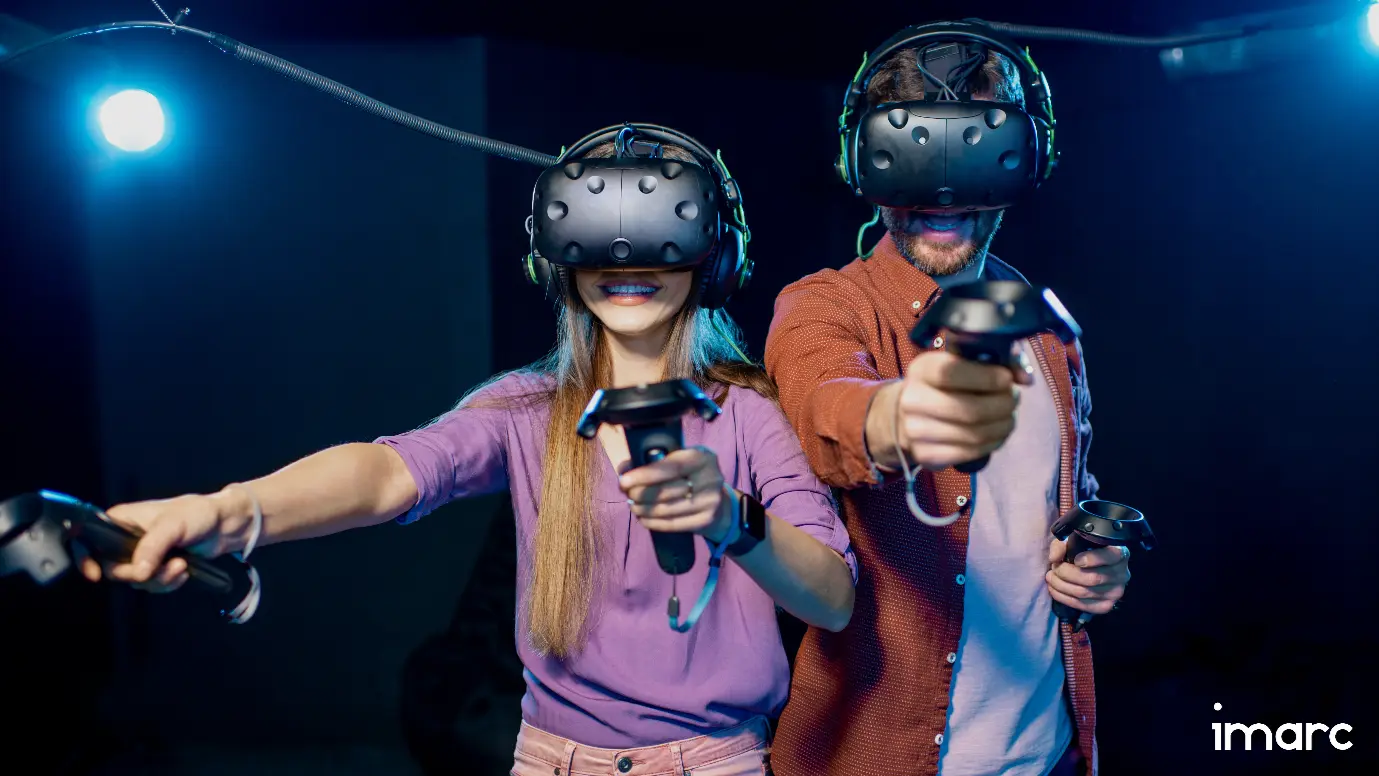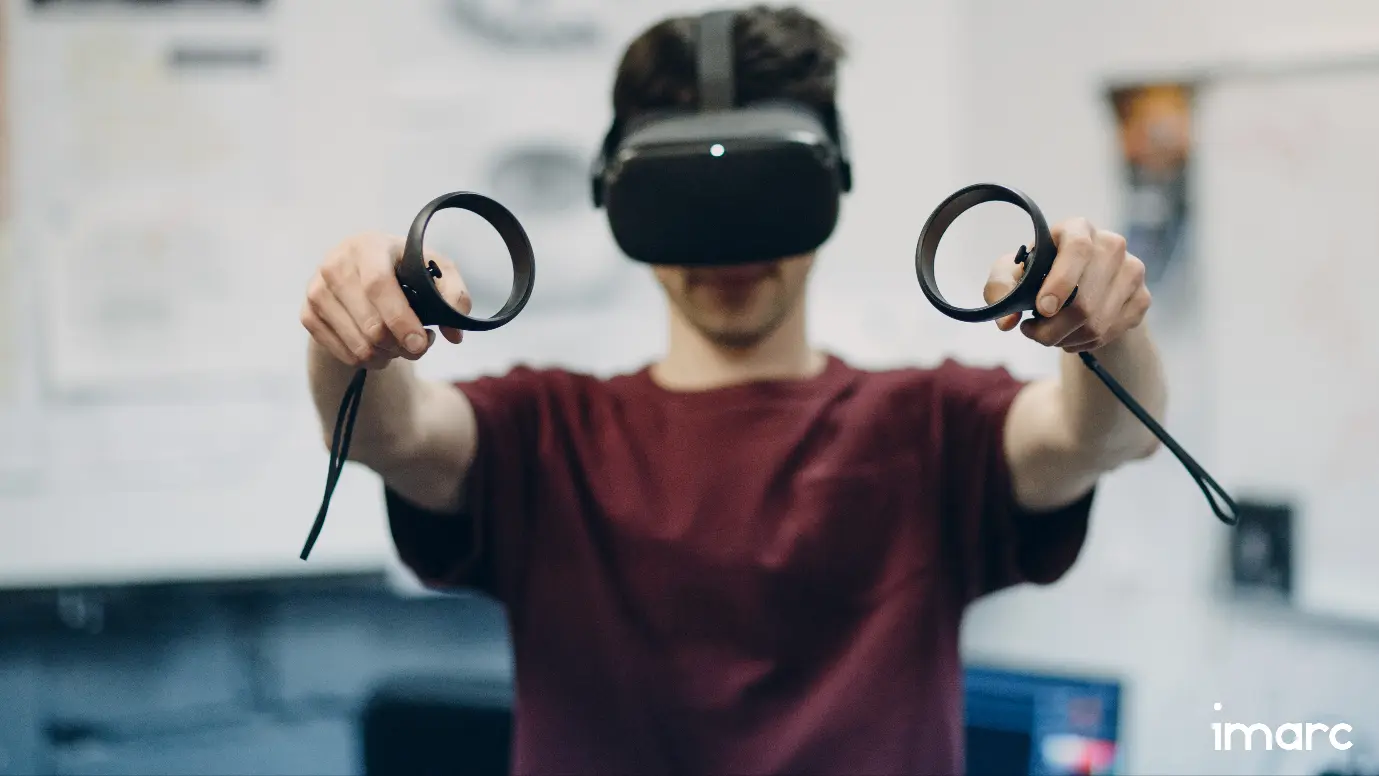Revolutionizing Play: The Global Surge in VR Gaming

Virtual reality (VR) gaming represents a new generation of computer games that leverage VR technology to provide high-definition visuals, spatial audio, and precise motion tracking, creating a sense of presence and immersion. VR gaming offers a 360-degree view of the virtual environment, keeping players engaged for longer periods compared to traditional gaming. Additionally, VR gaming is used in rehabilitation and the treatment of phobias, anxiety disorders, and other psychological conditions. It is also employed to train soldiers in combat scenarios, strategy, and decision-making.
VR games offer various experiences, such as fully immersive games, seated or stationary experiences, and room-scale VR. Fully immersive games provide complete immersion, allowing players to look around, move, and interact with the game world naturally. Examples of fully immersive games include "Half-Life: Alyx" and "Beat Saber." Some VR games, such as cockpit simulators and puzzle games, are designed to be played while sitting or standing in one spot. Additionally, room-scale VR games allow users to move within a defined space, with the HTC Vive being an example of room-scale VR. Various genres of VR games are available, including racing, adventure, fighting, shooting, mystery, thriller, puzzle, science fiction, and others. The growing online gaming market, rising technological advancements, expanding genres, and increasing accessibility of virtual reality games will boost the demand for VR games in the forecasted period.
The Key Drivers Behind the Rise of VR Gaming
The global virtual reality gaming market is expected to exhibit a CAGR of 26.6% during 2023-2032, as per the recent findings by IMARC Group. The demand for virtual reality games has increased substantially over time. Various factors contributing to the market's growth are outlined below.
Technological Advancements: Continuous technological advancements in hardware and software components by key players are enhancing the user gaming experience and driving the growth of the virtual reality gaming market. Improved hardware components offer better resolution, a wider field of view, and more accurate tracking systems. Furthermore, the development of standalone VR headsets eliminates the need for gaming consoles, PCs, and smartphones, making VR gaming more accessible and convenient. These headsets also provide wireless freedom, reducing cable complexity and clutter, resulting in a more seamless gaming experience.

Increasing Accessibility and Availability: Companies have significantly lowered the manufacturing costs of hardware and software components, including VR headsets and gaming consoles, by harnessing advanced technologies and reducing the costs of key elements like display components, sensors, and processors. As a result, these devices and components have become more affordable and accessible, reaching a broader audience. This enhanced accessibility and affordability are drawing a growing number of consumers to VR gaming, expanding its popularity and reach.

Growth of E-Sports and Competitive Gaming: The increasing demand for video games, online gaming communities, and digital entertainment platforms is fueling the need for esports content and competitions. The integration of VR technology into esports is revolutionizing the esports experience, enriching gameplay, and broadening the horizons for competitive gaming. Furthermore, VR e-sports, facilitated by headsets such as Oculus Rift and HTC Vive, deliver immersive experiences in virtual worlds, captivating both players and spectators with innovative forms of competitive gaming.

Investments in VR Gaming: Growing investment and funding from major technology companies and venture capitalists are also bolstering the development and marketing of VR technology and content. For example, in 2024, GV, the venture capital arm of Alphabet Inc. (Google's parent company), led a US$ 20 million funding round for StatusPro, a sports virtual reality startup preparing for expansion in gaming. Additionally, Sony Group plans to increase its R&D spending in its gaming division, allocating approximately US$ 2.13 billion to research and development for the fiscal year ending in March 2024. This factor is likely to propel the market of VR gaming in the forecasted period.

Content Availability and Diversity: The growing diversity of game genres, including action, adventure, simulation, and educational games, is attracting a larger user base. Moreover, the increasing variety of content and innovative gaming experiences are appealing to different player preferences, propelling the VR gaming industry forward. Additionally, exclusive game titles and content are significantly driving the market growth of virtual reality games.

Social and Multiplayer Experiences: Social and multiplayer gaming experiences allow users to interact with friends and fellow gamers in virtual spaces, enabling real-time communication, cooperation, virtual meetups, and events. These features make the gaming experience more dynamic and appealing. The increasing popularity of social and multiplayer gaming is expected to significantly boost the adoption of VR games in the coming years.

Furthermore, the expanding gaming industry, rising demand for VR video games, and growing numbers of casual and professional gamers will boost the market. Apart from this, increased smartphone and laptop usage, high-speed internet access, and more VR gaming zones in commercial areas will further strengthen market growth in the forecasted period.
Exploring the Latest Breakthroughs in Virtual Reality Gaming
- In February 2024, XR Games, in collaboration with Rebellion, a video game developer and publisher, developed the game Zombie Army VR. It is set to launch in 2024 on PlayStation VR2, Meta Quest 2, 3, and Pro, Oculus Rift, and PC headsets via Steam.
- In March 2024, Virtuix, the company behind the "Omni One" full-body virtual reality (VR) treadmill and gaming system, announced a lineup of 35 games set to launch with the Omni One in late Q2 2024. The launch lineup features popular VR titles such as Ghostbusters: Rise of the Ghost Lord, Peaky Blinders: The King’s Ransom, Hubris, and Breachers.
- In 2024, Meta is gearing up to introduce a budget-friendly version of its Quest 3 VR headset, tentatively named the Quest 3S. Anticipated VR releases such as Alo Moves XR and Miracle Pool include Quest 3S as a compatible device, suggesting a more economical option compared to the Quest 3.
- Flat2VR Studios emerges from the successful Flat2VR community, aiming to transform flat-screen games into immersive VR experiences. Teaming up with Impact Reality, they plan to release their first licensed VR game by late 2024 or early 2025, targeting major VR platforms.
- In January 2023, HTC VIVE launched the VIVE XR Elite headset. This innovative device seamlessly integrates Mixed Reality (MR) and Virtual Reality (VR) capabilities into a single, compact, lightweight, and highly versatile unit. It's ideal for various activities such as gaming, fitness, productivity, and more.
IMARC's Expertise: Shaping the Future of Industry Insight
Companies need to set goals for the development of new and innovative virtual reality games. It is crucial for them to analyze their existing products and identify areas where new technological advancements can enhance the virtual reality gaming experience. Additionally, analyzing competitors' business strategies and product innovations is essential for developing unique and feature-rich virtual reality games.
At IMARC Group, we specialize in assisting companies through market research to identify the latest trends, business strategies, and product opportunities. We help organizations in the virtual reality gaming market find their target audience, understand their preferences and purchasing behavior, and create powerful marketing plans. Our expertise includes providing information on new product launches, innovations, and recent trends and developments. We support businesses in positioning themselves for long-term success and growth.
Our Clients
Contact Us
Have a question or need assistance?
Please complete the form with your inquiry or reach out to us at
Phone Number
+91-120-433-0800+1-201-971-6302
+44-753-714-6104










